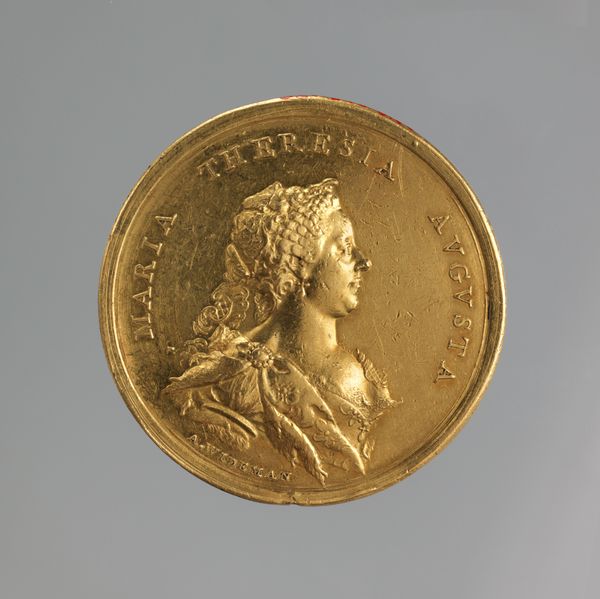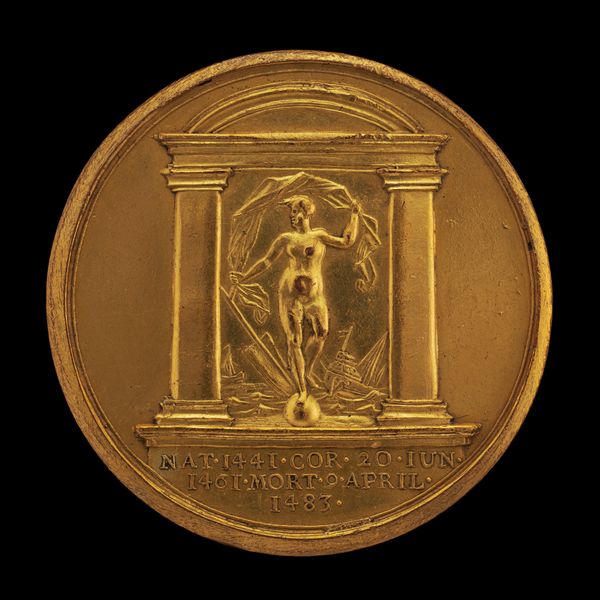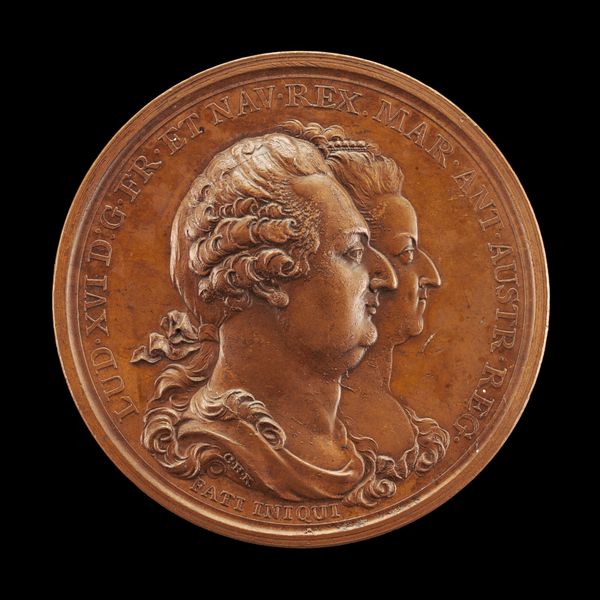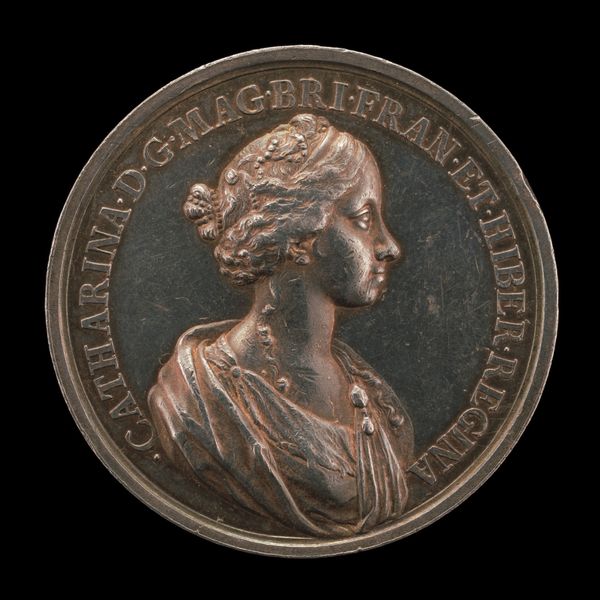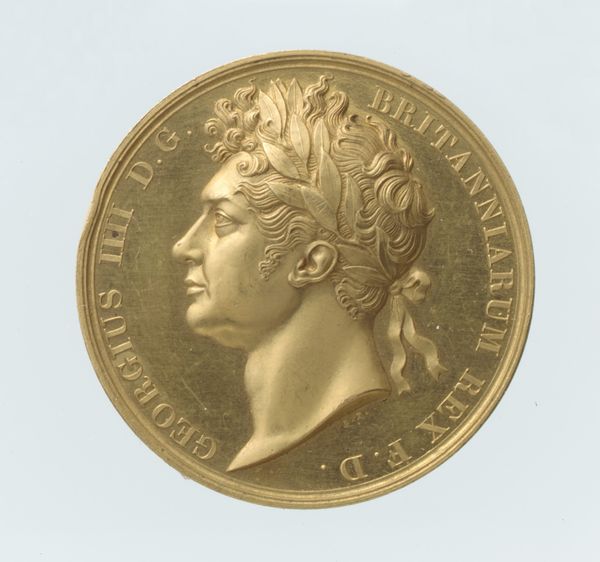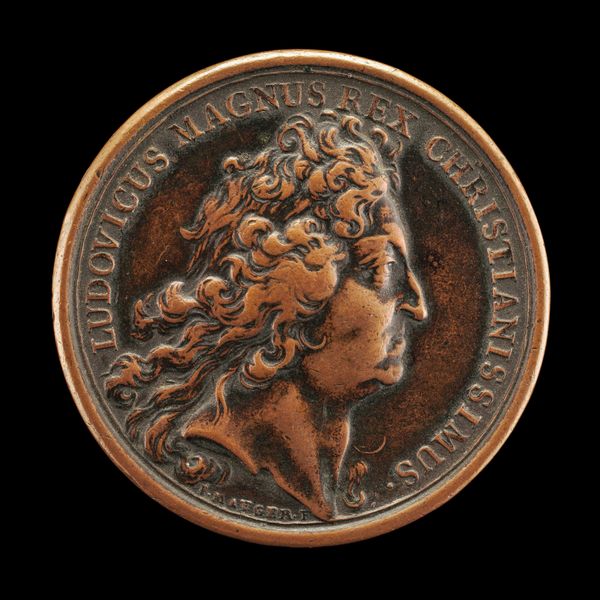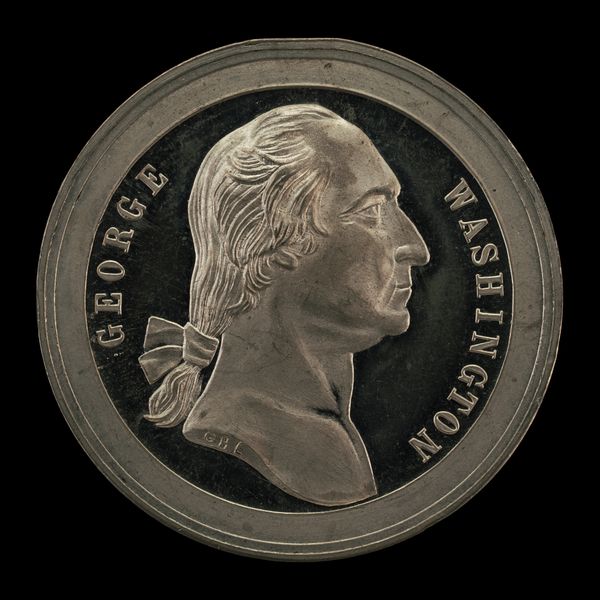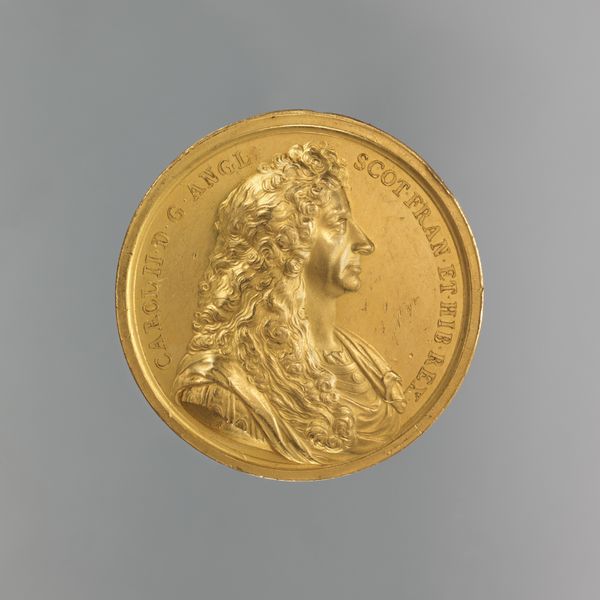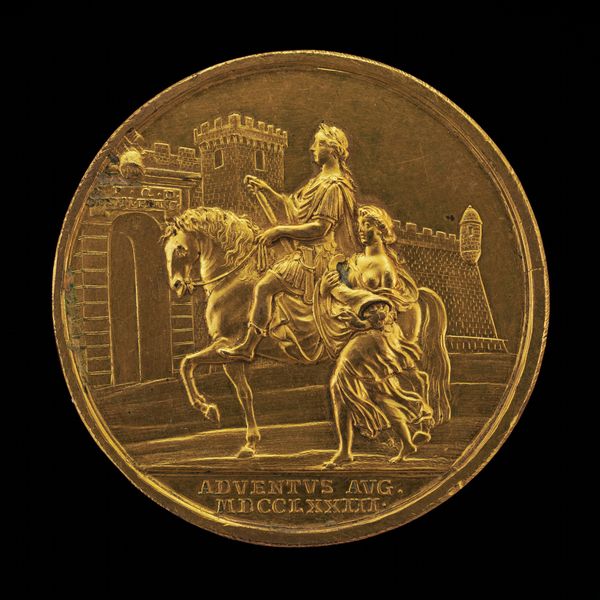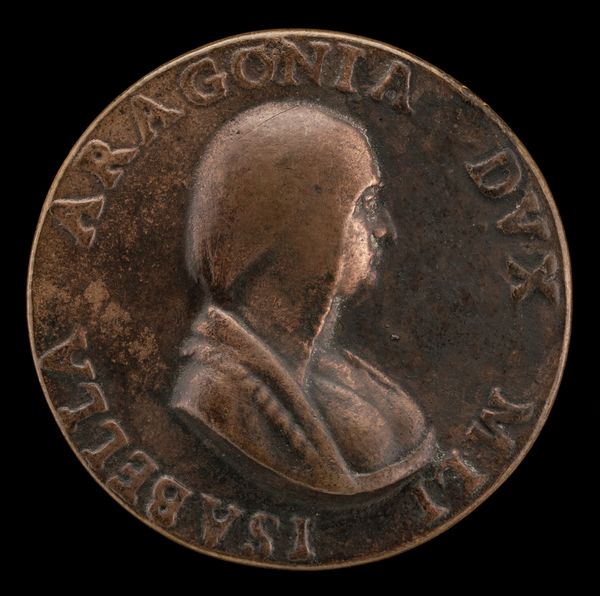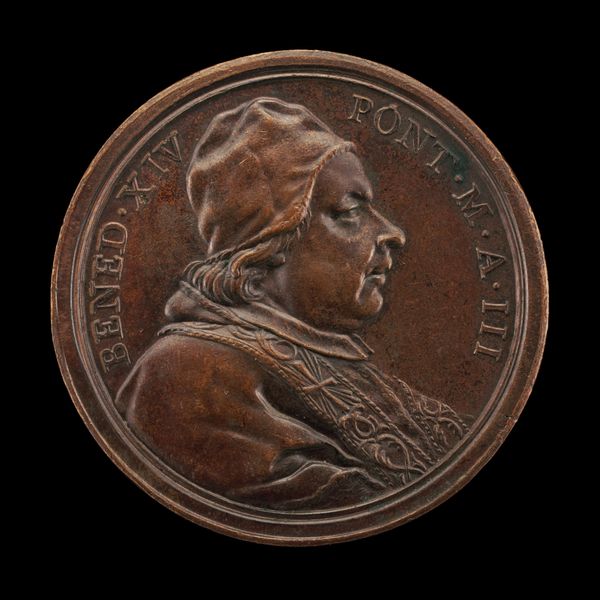![Joseph II, 1741-1790, Holy Roman Emperor 1765 [obverse] by Johann Martin Krafft](/_next/image?url=https%3A%2F%2Fd2w8kbdekdi1gv.cloudfront.net%2FeyJidWNrZXQiOiAiYXJ0ZXJhLWltYWdlcy1idWNrZXQiLCAia2V5IjogImFydHdvcmtzLzFlZjZkNGVkLTE2NDgtNDhhNy1iZDI4LTA0NTgzZTgwOGUxYy8xZWY2ZDRlZC0xNjQ4LTQ4YTctYmQyOC0wNDU4M2U4MDhlMWNfZnVsbC5qcGciLCAiZWRpdHMiOiB7InJlc2l6ZSI6IHsid2lkdGgiOiAxOTIwLCAiaGVpZ2h0IjogMTkyMCwgImZpdCI6ICJpbnNpZGUifX19&w=3840&q=75)
Joseph II, 1741-1790, Holy Roman Emperor 1765 [obverse] 1773
0:00
0:00
metal, sculpture
#
portrait
#
neoclacissism
#
metal
#
sculpture
#
history-painting
Dimensions: overall (diameter): 4.96 cm (1 15/16 in.) gross weight: 44.51 gr (0.098 lb.) axis: 12:00
Copyright: National Gallery of Art: CC0 1.0
Editor: Here we have Johann Martin Krafft's "Joseph II, 1741-1790, Holy Roman Emperor 1765 [obverse]," a metal sculpture from 1773. Its golden hue and regal bearing project power. What can you tell me about it? Curator: Well, at first glance, this neoclassical portrait evokes a return to idealized forms and aesthetics. However, by studying the portrait of Joseph II through a critical lens, we must also recognize it as a symbol of power, rife with historical complexities. Editor: Complexities? Could you elaborate? Curator: Of course. Joseph II was considered a progressive ruler for his time, enacting reforms to abolish serfdom and promote religious tolerance. But these changes were top-down. We must also acknowledge that his reforms were ultimately designed to centralize power within the Habsburg monarchy. Who truly benefited, and at whose expense? These questions invite us to deconstruct the seemingly straightforward image of the benevolent ruler, challenging the traditional art historical narrative. What do you make of the inclusion of the laurel wreath? Editor: I always thought of it as a simple signifier of victory, like on Roman emperors! Curator: Indeed. And who decides who gets to wear it? Consider the context. This isn't just about individual accomplishment, but the ways in which societies validate and perpetuate power. The artwork is not merely an object to admire, but rather it invites conversations about class, legacy, privilege and access, ideas about whose voices get heard, or suppressed in historical narratives. Editor: So by studying it we can ask important questions and understand the bigger picture of society, class, and how power operates. Curator: Exactly. Looking at art as an activist is really about finding these untold stories and connecting them to the issues we still face today. Editor: That's a totally different perspective! It encourages us to really dig into history. Thank you for showing me how.
Comments
No comments
Be the first to comment and join the conversation on the ultimate creative platform.
